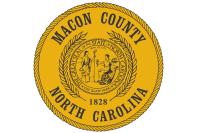Medicinal plants of the Southern Appalachians
Back in November at the Great Smoky Mountains Book Fair in Sylva I met Patricia Kyritsi Howell and purchased a copy of her Medicinal Plants of the Southern Appalachians (BotanoLogos Books, 2006).
I am not always impressed by medicinal publications because too often it’s apparent that the authors aren’t very well grounded in regard to actual botanical knowledge. That certainly isn’t the instance with Howell’s publication. I can recommend it to those interested in this region’s flora.
Howell is the owner of BotanoLogos, a school located in north Georgia that provides experiential learning about edible and medicinal plants of the Southern Appalachians. She is a registered herbalist and a member of the American Herbalists Guild.
Howell notes that she “grew up on the tall grass prairies of northern Illinois and was well into my thirties the first time I walked into a deciduous cove forest in the Southern Appalachians. I remember sitting along a path crowded by many of the medicinal plants I used often in my work with herbs. The hillside above me was covered with black and blue cohosh, partridgeberry, Solomon’s seal, and maidenhair fern. Plants I had only known as dried leaves and roots in carefully labeled jars were suddenly gloriously alive. I felt I was among friends ... A few years later I moved to the Southern Appalachians. Now, growth cycles of the native medicinal herbs around my house on the edge of a great wild forest have become my markers for the coming seasons.”
Howell provides concise and well-organized commentary on such topics as the history of the region’s medicinal plants, beginning, of course, with the Cherokees. For me, the introductory section devoted to “The Simple Art of Medicine Making” was especially informative. Therein, she covers various preparation methods that many manuals refer to but often fail to describe in any detail: infusions and decoctions, folk and weight-to-volume tinctures, simple syrups, compresses, poultices, baths, enemas, vaginal douches, solar infused oils, oven-method infused oils, and salves.
The appended portions of the book are also first rate, consisting of a glossary; a general bibliography and a listing of “recommended books;” sources for herbs, native plants, and seeds; native plant societies; threatened and endangered plant lists; bloom and harvest calendars; a therapeutic index “provided as a quick, general guide for finding the right herb to treat a specific symptom or condition;” and an index.
Related Items
The heart of the book consists of the medicinal uses for 45 species that grow within the Southern Appalachian region. All are plants commonly encountered: blood root, evening primrose, gentian, ginseng, Indian pipe, skullcap, stone root (horse balm), wild ginger, yellow root, etc. The section devoted to each generally consists of from three to four pages, according to the following format: common name, botanical name, family, description, habitat, key actions, part used, traditional uses, current uses, harvesting, preparations, and dosages.
For example, in the entry for boneset (Eupatorium perfoliatum), the reader is informed that other common names are feverwort, ague weed, and Indian sage; that the stem appears to puncture (perfoliate) the leaves; and that it is common in open fields, at the edges of woodlands, and along streams. The aerial (above-ground) portions are harvested “in late summer just as the flowers are forming” and dried so that the leaves and flowers can be crumbled and stored in glass jars. Because it is so bitter, Howell recommends using it in syrup form and provides recipes and appropriate dosages for doing so. There is also an entry that relates boneset’s traditional use as “one of the most frequently used household herbs in the eastern United States” during the 19th century. In regard to current use, Howell considers it to be “one of the most useful herbs for the treatment of colds and influenza” as it is purported to stimulate immune response, reduce fevers, and eliminate excess respiratory congestion.
Copies of Medicinal Plants of the Southern Appalachians (softcover, 262 pages) are available at regional bookstores. Or to order a copy, send a check or money order, made payable to BotanaLogos Books, in the amount of $22.95 (includes postage and handling) to BotanoLogos Books, POB Box W, Mountain City, Georgia, 30562-0917. (Georgia residents add 7 percent sales tax.) Visa or MasterCard orders can be placed by calling 706.746.5485.
George Ellison wrote the biographical introductions for the reissues of two Appalachian classics: Horace Kephart’s Our Southern Highlanders and James Mooney’s History, Myths, and Sacred Formulas of the Cherokees. In June 2005, a selection of his Back Then columns was published by The History Press in Charleston as Mountain Passages: Natural and Cultural History of Western North Carolina and the Great Smoky Mountains. Readers can contact him at P.O. Box 1262, Bryson City, N.C., 28713, or at This email address is being protected from spambots. You need JavaScript enabled to view it..









